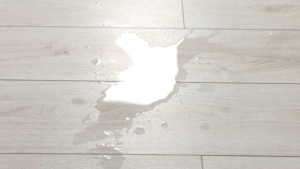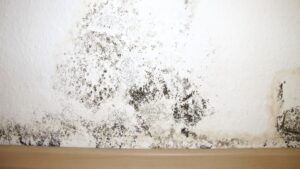Flooding is an average homeowner’s worst nightmare. Standing water can cause extensive property damage and is the home for bacteria, viruses, and other harmful microbes. Molds and mildew can grow in flooded basements or other damp areas.
The first step to dealing with water damage is to reach out to a water damage company immediately for help. A trained water damage restoration professional assesses the damage, plans accordingly, and uses specialized equipment to remove water and moisture.
One common mistake a homeowner makes after a flood is underestimating the effects of water damage. Avoid this pitfall at all costs.
When dealing with water damage, every minute counts. The sooner you get a professional into the start mitigating, the higher the probability of lower the restoration costs.
Below are some severe cleanup issues that water damage restoration experts address.
Mold Growth
Mold growth is one of the most common consequences of water damage. Molds love moisture. Standing water in your home can get into crevices creating the perfect breeding ground for mold and mildew.
Mold spores spread quickly. If you do not move swiftly to tackle the problem, you may end up with a full-blown infestation. It can be a dangerous situation, especially if someone in your home has asthma, is allergic to mold, or has other respiratory health issues.
Mold does more than just negatively affecting the aesthetic appeal of your home. Mold exposure can cause several health problems. In people with mold allergies, breathing in mold spores can trigger an allergy attack.
Below are steps to solving a mold problem.
- Assess: Your contractor will assess mold growth. They will identify moisture sources and locate spots where mold spores are hiding.
- Document: The restoration team will take pictures and videos of the affected areas. Based on the findings, the team will develop a remediation plan. A remediation plan typically answers common questions related to project timeline, project roles & responsibilities, testing, and possible relocation (where the homeowner will be temporarily relocated).
- Calculate: The team will calculate the extent of the contamination and decide how they should approach mold removal and cleanup.
- Remediate: Once the affected areas are isolated, the team will start the remediation. Mold will be removed and placed in plastic bags. The team will clean non-porous materials and wood surfaces with a HEPA vacuum.
Contaminated Water
Flood water may contain sewage. Some harmful pathogens that thrive in contaminated water include E Coli bacteria, Staphylococcus, Streptococcus, and Shigella.
E Coli bacteria can cause gastrointestinal illness, whereas Staphylococcus and Streptococcus cause skin infections. Shigella is also known to affect gastrointestinal health.
Experts should handle contaminated water. If you try to remove dirty water, you may unknowingly expose yourself to the deadly bacteria and viruses in it.
Structural Damage
If you ignore water damage in your home, things may get from bad to worse. Standing water can cause irreversible structural damage. It can ruin your foundation, drywall, joists, cabinets, carpeting, and flooring.
Even if you do not notice any signs of water damage after a flood, have a professional inspect your property. Often, homeowners miss the signs of water damage. By the time they realize their overlooks, it’s too late.
Things to do While Waiting for Your Water Damage Restoration Expert
While you wait for your water damage restoration expert to arrive, take these steps to avoid health issues, and mitigate damages.
Move to a Safe Place
If your ceilings are sagging or you have reasons to believe that your home’s structural integrity is compromised, move to a safe place (it can be your neighbor’s home).
If your home is structurally sound, examine the affected areas. Remember to turn off water and electricity to the affected areas before inspecting them.
Be careful to avoid contact with contaminated water. If water has been standing in your home for more than 24 hours, wear a mask to prevent breathing in mold spores and harmful bacteria.
Be extra cautious while walking on slippery and wet floors.
Remove Items from the Affected Areas
Remove items stored in the affected areas to dry and safe areas. Rugs and other items on the floor can stain the carpet or floor underneath. Remembering to not unnecessarily expose yourself to toxins and bacteria.
To protect your furniture and carpet from damage, place a dry layer between the legs of your furniture and the wet floor. If you have furniture with metal legs, place a piece of foil under their legs to prevent rust marks. Keep in mind this is only until the professionals arrive.
Remove Water (if it is safe to do so)
When you call a water damage restoration company, ask them whether they recommend removing water.
Depending on the seriousness of the problem, safety factors, and how far you are from the provider, the professional may advise you to use buckets to remove water or use a wet-dry vacuum to remove wet spills.
West Coast Fire and Water is a renowned water damage company in Petaluma that has developed an effective process to address water damage. To make an appointment, call (707) 504-3708.

Marketing Director, West Coast Fire & Water
Christian Ahlmann is the Marketing Director at West Coast Fire & Water, a California restoration company providing water, fire, mold, biohazard, storm, and reconstruction services across multiple locations. He leads brand, content, and demand programs that support rapid response and customer education. His background blends operational storytelling, community engagement, and crisis communications.



